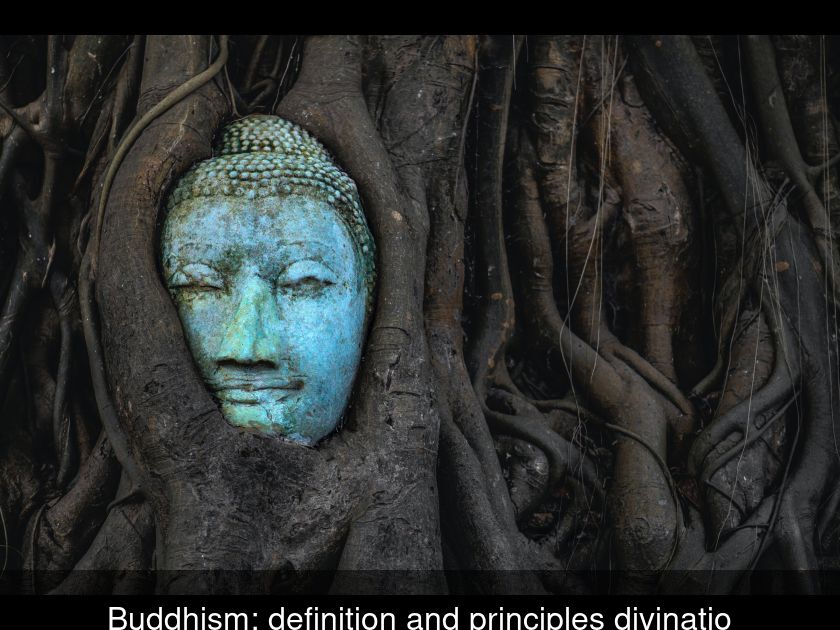Buddhism: Definition And Principles
In a world that is increasingly fast-paced, more and more of us are searching for meaning. We wish, we need to find meaning in our lives, guiding principles that lead us to live in a more ethical and just manner. Buddhism seems to provide answers to these questions for some of us, at least.
What is Buddhism?
It is actually more of a philosophy of life than a simple religion. It was created in India in the 4th century. The term "Buddhism" does not actually exist among Buddhists, who prefer to speak of Dharma as the set of teachings of Buddha and name Sangha the community of people believing in this doctrine. Practitioners of Buddhism refuse to see Dharma as a religion because Buddha himself called it more of a doctrine, a philosophy of life, an ethics that they sought to teach through sermons.
What is Buddhism all about?
This is a set of life precepts, teachings called Dharma, offered by Buddha to the world with recommendations for daily practices to awaken one's mind. It involves practicing meditation, as well as rituals such as prayers or offerings aimed at achieving enlightenment. But Buddhism is much more than that, as it is primarily about changing one's way of seeing the world, seeing life. Dharma is a true progressive teaching aimed at realizing the illusions and falsehoods of the world we live in today in order to be able to see the real world as it is and as Buddha encourages us to see it.
Buddhism: how to practice?
It is about purifying one's life, cleaning it from its excess, learning to learn, learning to listen and help others, leading a life where oneself is not the main character. Buddhists often practice meditation to center themselves and develop their consciousness and mind. It is a philosophy of life, a way of living life differently, showing love and compassion towards all living beings.
There are also 5 precepts from the Dharma to follow:
Not to take life
Not to steal
Not to commit adultery
Not to lie
Not to consume substances that disturb the mind
Buddhism: how to convert?
You don't become a Buddhist by birth or through baptism, it's a personal choice that one can make at any moment in life when they feel the need, the wish. This is called "Taking Refuge in the Three Jewels". The person can then express their commitment formally, through ceremonies that can be practiced alone or in community.
What are the Three Jewels?
This is about the Dharma, the Sangha, and the Awakened One; the Buddha.
In which countries is Buddhism practiced?
Mainly in India, China, Japan, Thailand, Bhutan, Laos, Sri Lanka, Myanmar, Korea, Hong Kong, Mongolia, Singapore, Tibet, Vietnam, and Cambodia. But believers can be found everywhere in the world.
The truths transmitted by Buddha are:
- Pain
- The origin of pain
- The cessation of pain
- The path that leads to the cessation of pain
What is the purpose of Buddhism?
If we follow the precepts of Buddha, the Dharma, and strive to understand, learn, and apply the 5 truths mentioned above, it allows us to lead a life focused on more meaning, enabling us to not be as affected by the inevitable difficulties of life, to know how to face them with a better self-awareness and understanding of the world. The ultimate goal is to attain Nirvana through the complete awakening of one's mind, freeing oneself completely from the mundane and attachments of the world.
Buddhism and reincarnation
Buddhists believe that when an individual dies, their soul continues and is reincarnated into another living being. The choice of the next living being will depend on their karma, on what they have done in their previous life. Buddhists more commonly use the term "rebirth".
Why have a statue of Buddha at home?
You can choose to have a Buddha statue at home, or a painting or other representation. This can symbolize prosperity, wealth, fulfillment, and wisdom. Having a Buddha statue at home can also serve to represent your spiritual practice, focused on the pursuit of wisdom and greater self-knowledge through meditation.
However, be careful not to place your statue in a water room or bedroom, as these are places of potential nudity. Additionally, once you have placed this statue somewhere, be careful not to place a photo in front of it, and be mindful not to turn your back on it as this represents a lack of respect and can attract bad luck.
Why does Buddha have big ears?
In East Asia, where the Buddha originated, having large ears is a sign of luck, wisdom, and compassion. That's why he is depicted this way.
Why does Buddha have a big belly?
In Asia, having a big belly represents joy of living, energy, wisdom, and prosperity. But this belief varies from country to country, so the representation of Buddha will change depending on the country of its creation.



